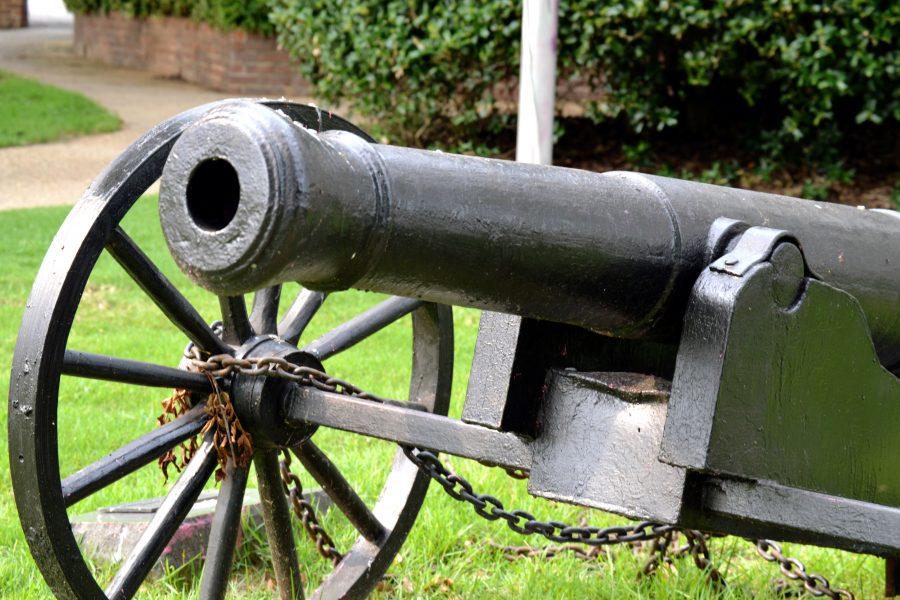On June 19 a bomb squad was called to The University of Alabama campus after crews repairing a sidewalk found ordnance buried in the ground.
Cathy Andreen, director of media relations, released a statement about a discovery via email Friday afternoon.
“Ten Civil War era cannonballs were discovered this afternoon by crews who were repairing sidewalks on the UA campus. Out of an abundance of caution, EOD technicians were called to address any safety issues. Because it was close to the end of the work day, employees in the immediate vicinity were allowed to leave the area,” Andreen said.
Robert Mellown, associate professor of art history emeritus, said the “cannonballs” discovered are not technically cannonballs, but shells.
“Some of the shells still had intact fuses and were considered highly unstable. Fortunately they did not blow up when they were removed from the ground,” Mellown said.
A shell contains a fuse and some sort of explosive, usually a powder, while a cannonball is a type of shot that does not. The EOD team was sent to ensure the safety of the people around the discovery site.
Harold Selesky, associate professor of history, said the use of these particular shells during the Civil War is not known, but there is a chance that they could have been used to train troops at the University.
“Unlikely that the projectiles were used in any skirmish, since Croxton’s raiders would be unlikely to leave ordnance behind, and the UA cadets ran away without fighting,” Selesky said. “Perhaps the projectiles were used/to be used for training the cadets to work artillery tubes.”
Before going out and buying a metal detector, one should realize that this find is incredibly rare. Even the experts are not necessarily making plans to go on an expedition to look for more ordnance.
“Finding a cache of ordnance 150 years after the end of the war is not a common occurrence, so I don’t think the find will inspire more searches,” Selesky said.
As for the future of the discovery, the exact location of the ordnance’s final location is still being determined. Lydia Ellington, director of the Gorgas House Museum, said the ordnance is likely to end up with other discoveries found many years ago.
“After speaking with UA officials today, I have been assured that after the cannonballs are fully disarmed, Dr. Bonner has said that they are to go to UA Museums,” Ellington said. “We hope to have them on display at the Gorgas House later this year. I believe that these cannonballs were found in the same general area as the ones we currently have on display.”









